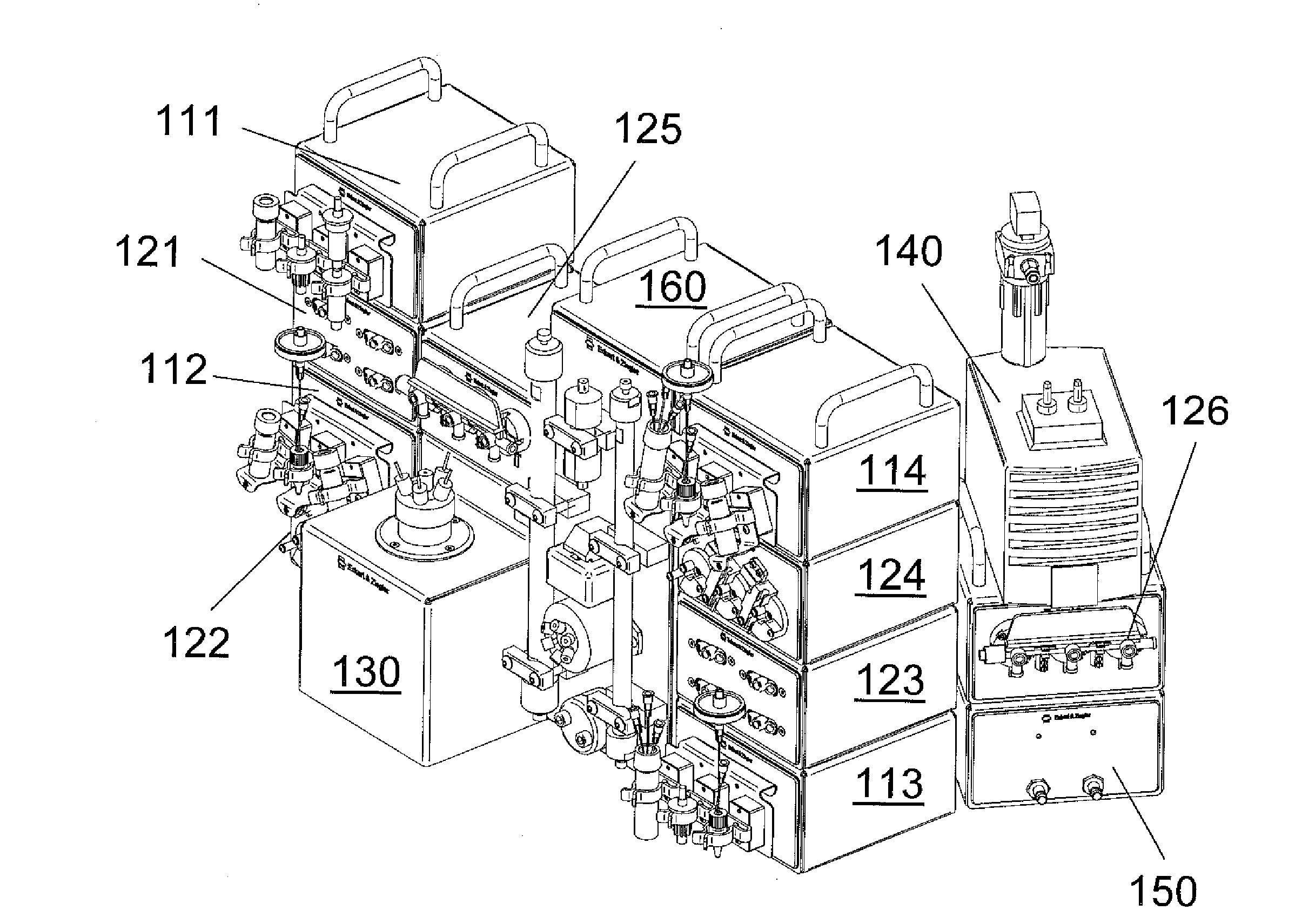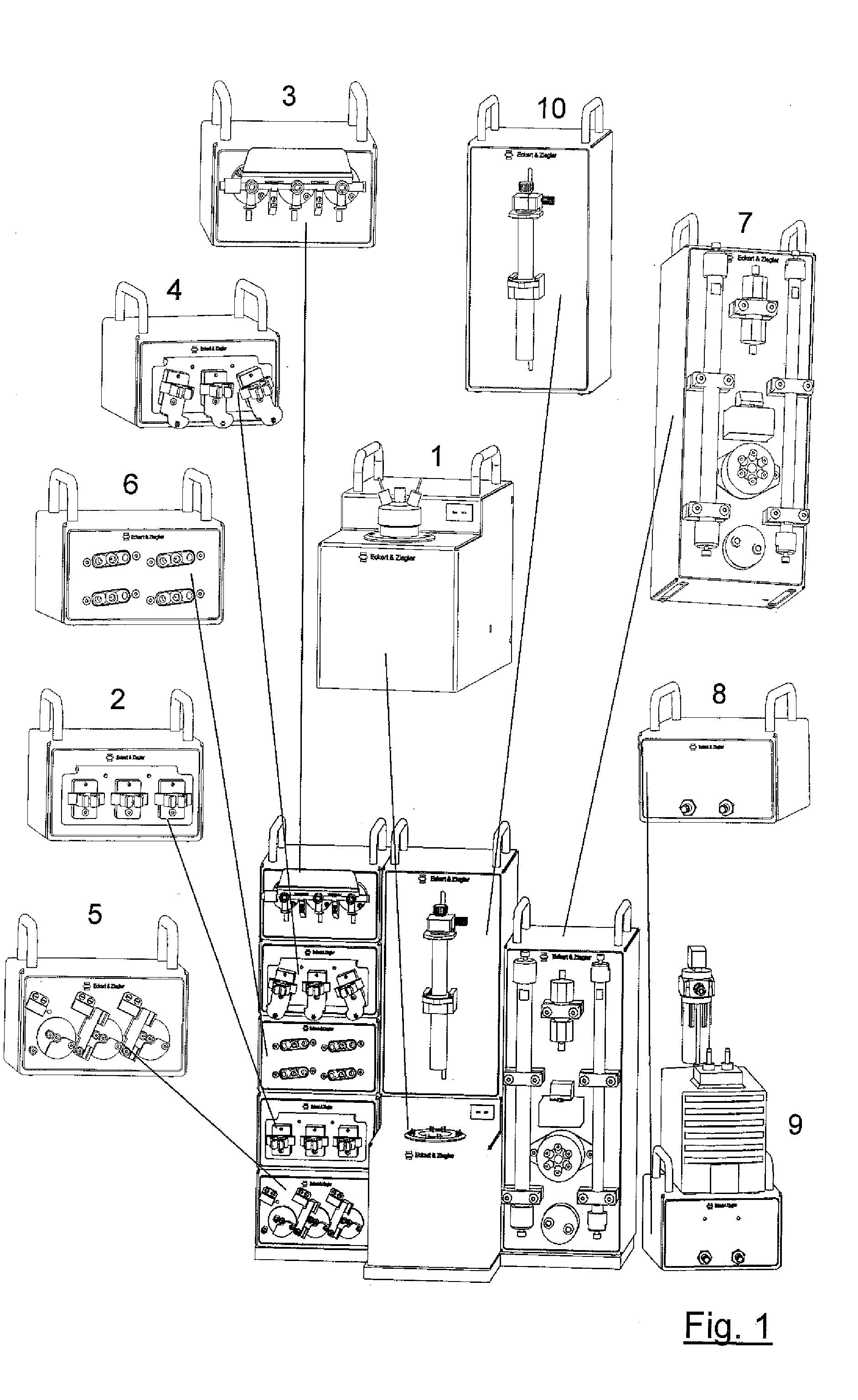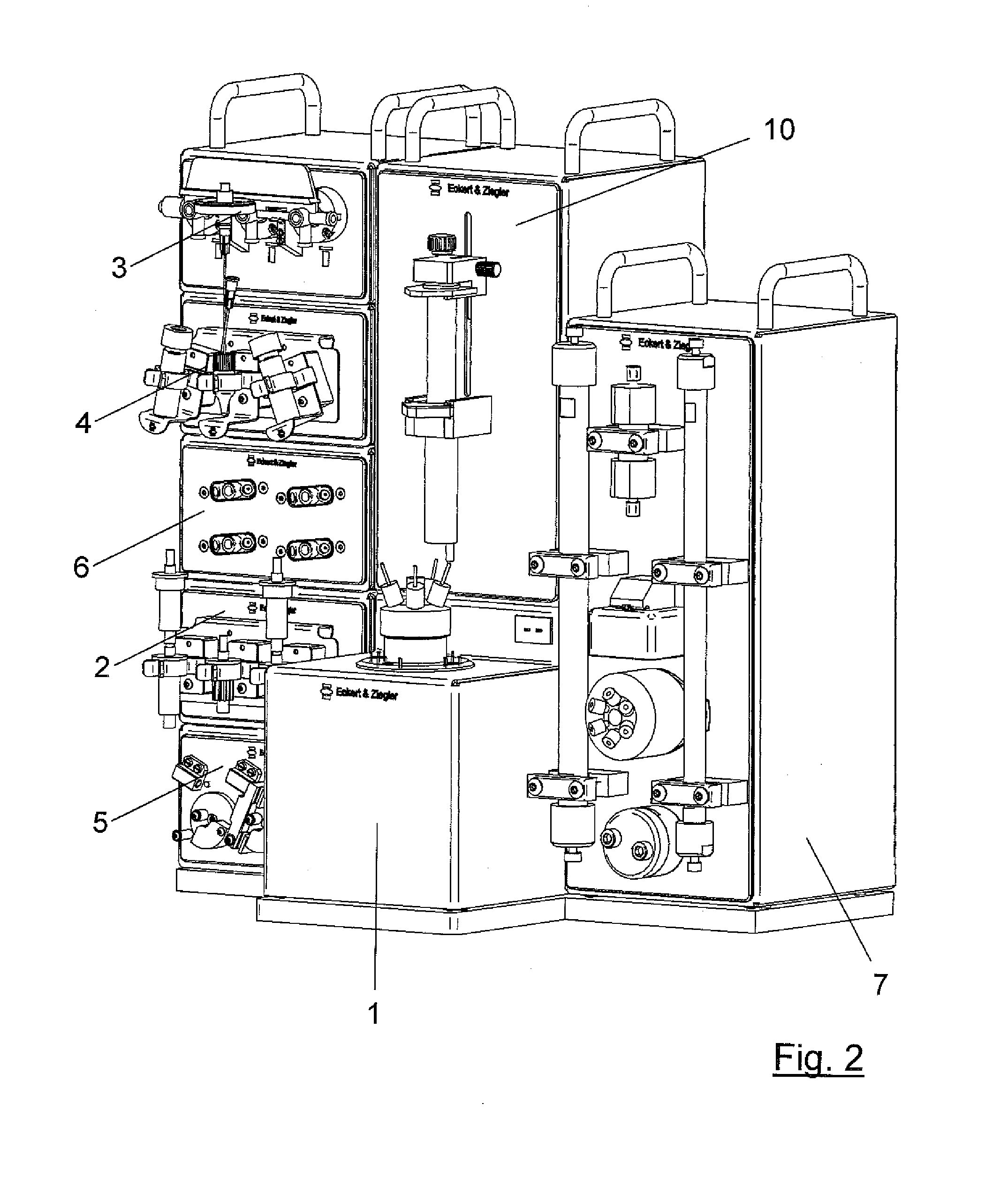System and Method for Processing Chemical Substances, Computer Program for Controlling Such System, and a Corresponding Computer-Readable Storage Medium
a chemical substance and computer program technology, applied in the field of system and a method for processing chemical substances, can solve the problems of inability to operate manually, limited application, and limited time available, and achieve the effect of reducing the number of chemical substances that are processed, and reducing the number of chemical substances processed
- Summary
- Abstract
- Description
- Claims
- Application Information
AI Technical Summary
Benefits of technology
Problems solved by technology
Method used
Image
Examples
example 2
Modular Synthesis System for the Preparation of Zevalin®
[0177]A system for the preparation of Zevalin® from the Zevalin® kit includes a module for holding vessels, two valve modules (valve bank), a metering module, a reactor module and a module for producing a vacuum (vacuum pump with filter). For transporting the medium, the individual components are connected by hoses, which are connected via quick-connects either to needles, which are pierced into the vessel covers having a septum, or directly to stopcocks, valves. All these are sterile one-way components, which are disposed after the reaction. A defined amount of radioactive solution is added to the reaction vessel by measuring the radioactivity in the reactor module. Corresponding quantities of the inactive reactants are metered from the vessels into the reaction vessel via a valve module and the metering module. The required quantities, the sequential order and the temporal progression of the addition are computed and controll...
example 3
Modular Synthesis System for the Preparation of Tc-99m-MIBI
[0178]A system for the preparation of Tc-99m-MIBI from the Tc-99m-MIBI kit includes a module for holding vessels, a valve module (valve bank), a reactor module and a module generating vacuum (vacuum pump with filter). For transporting the medium, the individual components are connected with hoses, which are connected via quick-connects either to needles, which are pierced into the vessel covers having a septum, or directly to stopcocks, valves. All these are sterile one-way components, which are disposed after the reaction. The small flask from the kit with Tc-99m-MIBI is inserted into the reactor block and radioactive solution is added. The solutions are transported and intermixed by applying an overpressure or underpressure in the reaction vessel with a module that produces the vacuum and is controlled by a valve module. For carrying out the synthesis, the reactor is heated and at the end of the reaction again cooled down ...
example 4
Modular System, Based on a Syringe Module, for the Preparation of Tc-99m-MIBI
[0179]A system for the preparation of Tc-99m-MIBI from the Tc-99m-MIBI kit includes a module for holding, transporting and activity measurement of vessels, a syringe module, a vessel agitation module, as well as a heater module. First, the required syringes are inserted and affixed in the syringe module. The reaction vial from the kit and the vial with the activity are placed in the provided holders in the vessel transport module. The activity vial is moved underneath the left syringe in the syringe module and the activity is drawn in from the activity vial. The reaction vial then moves onward to the left syringe and the activity is added to the reaction vial. The dosage is monitored by the detector. The reaction vial subsequently moves to the vessel agitation module where it is received with the gripper and agitated. After agitation, the heating device of the heater module moves underneath the vessel which...
PUM
| Property | Measurement | Unit |
|---|---|---|
| temperatures | aaaaa | aaaaa |
| chemical | aaaaa | aaaaa |
| radioactive | aaaaa | aaaaa |
Abstract
Description
Claims
Application Information
 Login to View More
Login to View More - R&D
- Intellectual Property
- Life Sciences
- Materials
- Tech Scout
- Unparalleled Data Quality
- Higher Quality Content
- 60% Fewer Hallucinations
Browse by: Latest US Patents, China's latest patents, Technical Efficacy Thesaurus, Application Domain, Technology Topic, Popular Technical Reports.
© 2025 PatSnap. All rights reserved.Legal|Privacy policy|Modern Slavery Act Transparency Statement|Sitemap|About US| Contact US: help@patsnap.com



